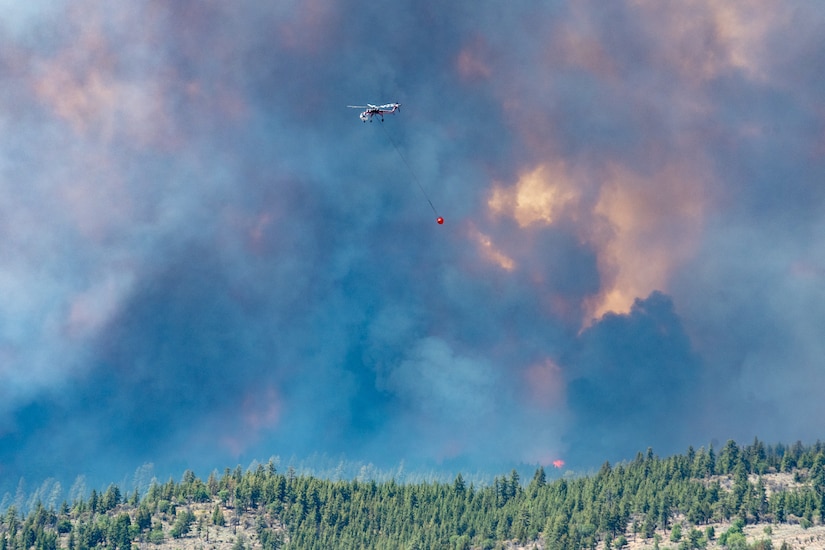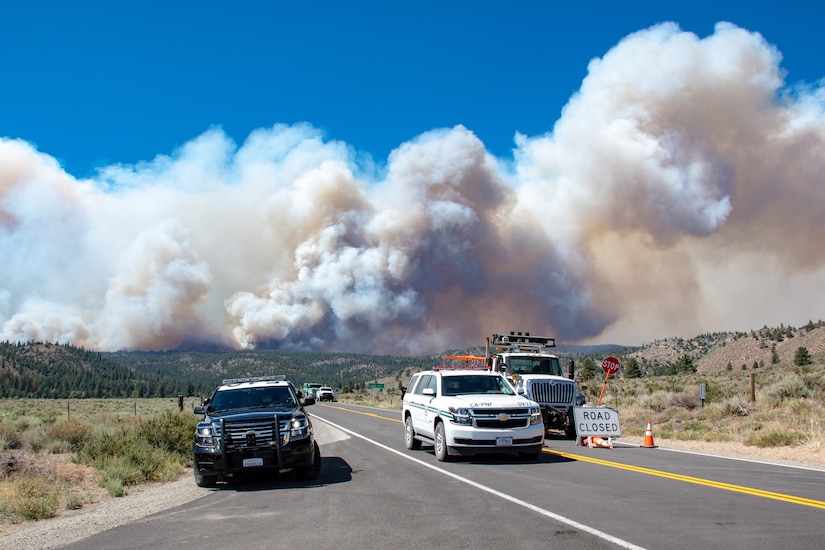Sept. 8, 2021 | , DOD News
Since the launch of a 2019 pilot program, the National Guard's "FireGuard" program, in conjunction with the National Geospatial-Intelligence Agency's "Firefly" capability, has provided actionable information to help fight wildfires on the United States west coast.

The results of the effort have been good, and now the Defense Department has agreed to extend use of NGA's Firefly program through September 2022. With Firefly extended for another year, the National Guard's FireGuard program will continue as well.
The FireGuard program includes two teams of Air Force and Army National Guard intelligence analysts — one in California and another in Colorado — who use the Firefly algorithm from NGA to help interpret data from multiple sources and sensors, including imagery from satellites and UAVs.
"Imagine Firefly as a funnel above FireGuard," Maj. Jan Bender, who serves as the commander of FireGuard's team in California, said. "We receive an array of information from multiple sources, and our analysts ... pull this information, aggregate it, analyze it, assess it, and then from that they produce sanitized unclassified products that go out to the wildland firefighting community."
Bender said the products produced by FireGuard allow for overhead maps to be generated with what he described as "polygons" laid on top that depict fire-affected areas. The firefighting community might receive updates to those products as often as every 15 minutes.
While the intelligence products the FireGuard team produces don't replace anything the wildland firefighting community already uses, they do offer firefighters things they don’t currently have access to.
"It complements and helps complete the picture on the ground for wildland firefighting partners," Bender said. "We are one of the first incident awareness and assessment tools that offers an overhead visualization of initial detections on wildfires and rolling assessments. There are a number of tools that come into play as a fire becomes a larger incident, but many times [firefighters] are not able to leverage them until the incident is a significant size. In our program, we excel at initial detections on wildfires in remote locations and [at] odd hours."


Phillip SeLegue serves as the deputy chief for the statewide intelligence program for CalFire. He's been in the firefighting business for 22 years now and says that right now in California there are 10 active wildfires all classified as "major attack fires," which he said is the highest level.
Since the start of the year, nearly 3,000 square miles of California has been destroyed by wildfires, he said, but the tools provided by FireGuard have improved the ability of the nearly 15,000 firefighters on the ground to do their job.
SeLegue said the tools provided by FireGuard and from Firefly provide information that allows him to better know where fires are and how they are spreading.
"As an intel person at our incident command post, it alerts me when fire continues to propagate in the field ... it allows me to be notified of the continued spread of it, so then back at the command post I can continue to produce models and advise operations."
At the broader level, SeLegue said, the tools from FireGuard allow him to see from the strategic level what is happening with wildfires in California so he can make the best decisions on how to request and allocate firefighting resources.
In one incident the tools provided by FireGuard were even able to help save lives, SeLegue said.

"There have been use cases where it's absolutely assisted in saving lives," he said. "The most notable was last year on the Creek Fire, where we were able to extricate civilians that were stuck at a campground as the fire converged and they were cut off from evacuation routes."
This year the DOD has again extended use of the NGA's Firefly program through the end of the fiscal year 2022, and SeLegue said he's glad to have it for that much longer.
"I think that this program is essential — that it's highly valuable, and assists us with our daily operation," he said.








No comments:
Post a Comment